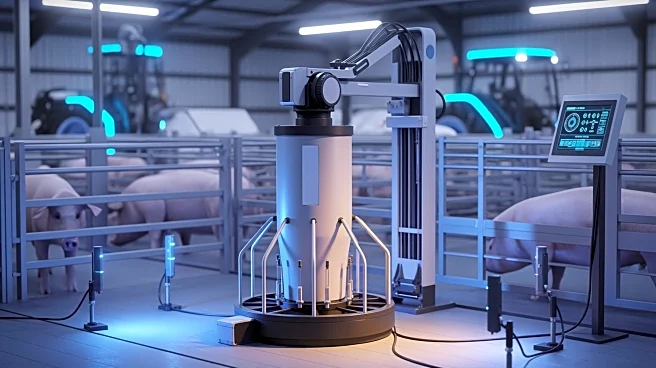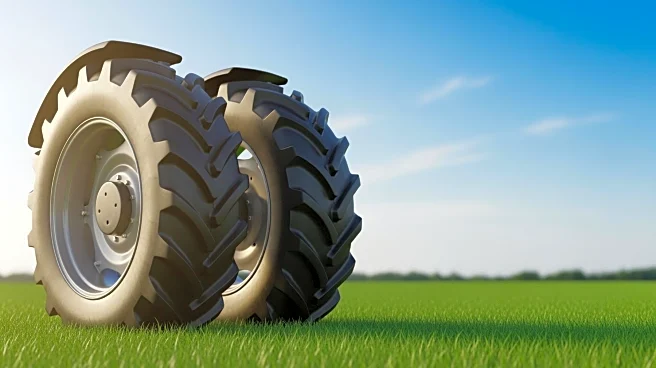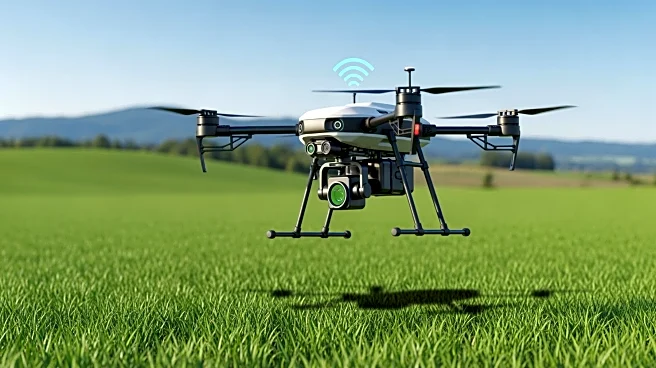What's Happening?
The agricultural robots market is forecasted to grow significantly, reaching an estimated value of $56.26 billion by 2030, according to MarketsandMarkets. This growth is driven by the increasing adoption
of automation and precision farming solutions aimed at improving operational efficiency and addressing labor shortages. Innovations in AI, machine learning, and IoT-enabled systems are facilitating autonomous planting, harvesting, and real-time crop monitoring. The emphasis on sustainable farming practices and optimal resource utilization is further supporting market expansion. Strategic government initiatives and investments in agri-tech startups are accelerating the deployment of advanced agricultural robotics globally.
Why It's Important?
The expansion of the agricultural robots market is crucial for addressing ongoing labor shortages and the demand for higher crop yields. By integrating robotic technologies, farmers can enhance productivity, lower operational costs, and maintain consistent yield quality. The adoption of precision farming techniques allows for more efficient use of resources, contributing to sustainable agricultural practices. This growth also represents significant opportunities for companies involved in AI, machine learning, and IoT technologies, as they play a pivotal role in developing the systems that drive this market. The increased use of agricultural robots can lead to more resilient food production systems, which is vital for global food security.
What's Next?
As the agricultural robots market continues to expand, further advancements in AI and machine learning are expected to enhance the capabilities of these systems. Governments and private sectors are likely to increase investments in agri-tech startups, fostering innovation and development in this field. The focus on precision agriculture will drive the demand for more sophisticated robotic systems capable of operating in diverse environments. Additionally, the integration of these technologies into existing farming practices will require training and adaptation by farmers, potentially leading to new educational and support programs.
Beyond the Headlines
The growth of the agricultural robots market may have broader implications for rural economies and employment. While automation can address labor shortages, it may also lead to shifts in the workforce, requiring new skills and potentially displacing traditional farming roles. Ethical considerations regarding the use of AI and robotics in agriculture, such as data privacy and the impact on small-scale farmers, will need to be addressed. Long-term, the adoption of these technologies could lead to more sustainable and efficient food production systems, contributing to global efforts to combat climate change and ensure food security.











